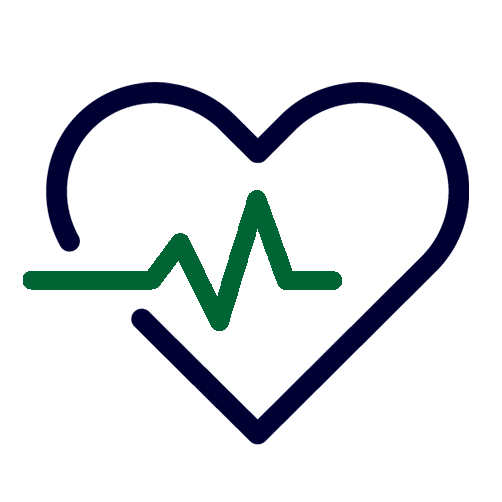PREVENTIVE HEALTH
THE ROLE OF SPORT
BENEFITS OF INCREASING SPORT AND PHYSICAL ACTIVITY FOR HEALTH
CHALLENGES
No matter what your age, being physically active and limiting your sedentary behaviour as much as possible every day is essential for health and wellbeing.
Encouraging these behaviours is a key policy objective of governments at all levels, but success will require a holistic approach across multiple areas of influence including transport, education, the built environment, healthcare, workplaces, sport, and more. 13
Understanding the full extent of the impact of physical inactivity requires clear data. Currently available data sources may only be collected intermittently, can quickly become outdated, or may not use standardised protocols and measures, limiting the analysis or comparison that can be made across different time periods and/or jurisdictions.
The adoption of consistent methodology and improved data currency and availability would help to address these challenges and strengthen the evidence base for successful programs and measures that will help more people be active, more often.
No single factor or measure will individually achieve our personal or social health goals, but sport, in its many forms, can serve as an excellent platform for families, communities and governments to encourage more people to increase their levels of physical activity and make an important contribution to individual and community health and wellbeing.
- Intergenerational review of Australian sport, BCG Consulting for the Australian Sports Commission, (2017).
- The value of community sport infrastructure: Investigating the value of community sport facilities to Australia, KPMG for the Australian Sports Commission, (2018)
- Just 15 min of exercise a day would 'boost world economy by US$100bn', Tom Walker, Sport Management, (8 November 2019)
- The economic burden of physical inactivity: A global analysis of major non-communicable diseases, Ding Ding, Kenny Lawson, Tracy Kolbe-Alexander, et al., The Lancet, Volume 388(10051), pp.1311-1324, (September 2016)
- Economics of sport and physical activity participation and injury, Australian Institute of Health and Welfare, (5 September 2023)
- Get active and your health isn't the only thing that will benefit, Office for Recreation, Sport and Racing, South Australia [media release], (20 October 2020)
- National Preventive Health Strategy 2021–2030, Australian Government, Department of Health, (2021).
- Physical activity, Australian Institute of Health and Welfare, (17 June 2024).
- Overweight and obesity, Australian Institute of Health and Welfare, (17 June 2024).
- Australian Burden of Disease Study 2022, Australian Institute of Health and Welfare, (13 December 2022).
- Community Perceptions Monitor Annual Report 2022-2023, Australian Sports Commission, (September 2023).
- AusPlay Data Portal: Motivations for participation, Australian Sports Commission, (accessed 20 July 2023).
- Getting Australia Active III: A systems approach to physical activity for policy makers, Bellew B, Nau T, Smith B, Bauman A (Eds.), The Australian Prevention Partnership Centre and The University of Sydney, (April 2020).
- The participation in organised sport doubles the odds of meeting physical activity recommendations in 7–12-year-old children, Kerli Mooses, Merike Kull, European Journal of Sport Sciences, Volume 20(4), pp.563-569, (2020).
- Organized sport trajectories from childhood to adolescence and health associations, Howie E, McVeigh J, Smith A, Medicine and Science in Sports and Exercise, Volume 47(7), pp.1331-1339, (July 2016).
- Adolescent participation in sports and adult physical activity, Tuija Tammelin, Simo Näyhä, Andrew Hills, et al., American Journal of Preventive Medicine, Volume 24(1), pp.22-28, (2003) quoted in Intergenerational review of Australian sport, BCG Consulting for the Australian Sports Commission, (2017).
- Physical activity and exercise guidelines for adults and older Australians, Australian Government, Department of Health and Aged Care, (accessed 19 May 2023).
- Australia's health 2018: Contribution of selected risk factors to burden of disease, Australian Institute of Health and Welfare, (20 June 2018).
- National sports injury data strategy, Australian Institute of Health and Welfare, (18 February 2022).
- Cost of Sports Injuries, Clearinghouse for Sport, (accessed 25 November 2022).
- Economics of sports injury, Australian Institute of Health and Welfare, (updated 30 November 2022).
- AusPlay dataset, Australian Sports Commission, (accessed July 2023).
RELATED TOPICS
Discover more about the value and benefits of sport.
Last updated: 19 May 2023
Content disclaimer: See Clearinghouse for Sport disclaimer
IS THIS INFORMATION COMPLETE?
The Clearinghouse for Sport is a sector-wide knowledge sharing initiative, and as such your contributions are encouraged and appreciated. If you would like to suggest a resource, submit a publication, or provide feedback on this topic, please contact us.
Alternatively, if you would like to be kept up to date with research and information published about this topic, please request a research profile setup.




 Health benefits
Health benefits



